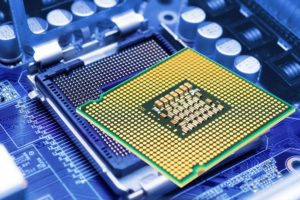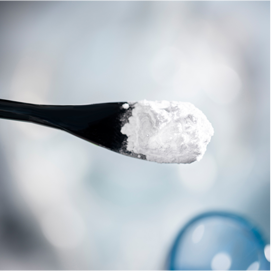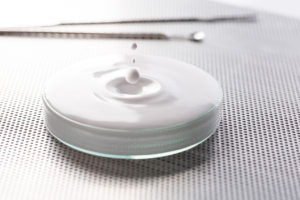Baikowski® High Purity Fine Oxides for Precision CMP Processes in the Semiconductor Industry
CMP (Chemical mechanical polishing/planarization) employs a synergistic combination of chemical and mechanical interactions between a substrate, a polishing pad, and a dedicated slurry.
Fine Oxide determinant Role in the Semiconductor Manufacturing
 In the ever-evolving landscape of electronical device, alumina, silica and ceria-based CMP processes have become crucial in the production of semiconductors and planar substrates for integrated circuits (ICs).
In the ever-evolving landscape of electronical device, alumina, silica and ceria-based CMP processes have become crucial in the production of semiconductors and planar substrates for integrated circuits (ICs).
Indeed, the presence of topographical irregularities materials may have an impact on the electronic system’s wafer yield, device performance, and overall reliability in the long run.
Eliminating rough edges on chips and integrated circuits also allows more transistors to be placed in less space, leading to more compact and higher performing electronics.
How to choose CMP Powders ?
 The powder choice depends on the substrate composition, the finishing requirements, and the targeted steps within the overall CMP process :
The powder choice depends on the substrate composition, the finishing requirements, and the targeted steps within the overall CMP process :
- High Purity Alumina, characterized by its alpha crystalline structure and high hardness, is particularly efficient for substrates that demand strong material removal rates, such as metals, especially tungsten or aluminum.
- Silica-based CMP is preferable whenever a softer abrasive action is needed, such as finishing polishing to achieve a smooth and uniform surface.
- Advanced Oxide Solutions when high selectivity and precision in material removal are critical. This is particularly evident in scenarios involving interlayer dielectrics and complex multilayered structures, where controlled removal and planarity are essential without compromising the integrity of adjacent layers.
Powders and Slurries CMP key Parameters
 The formulation of the slurry is highly dependent on the semiconductor material composition, the desired precision level and the specific requirements of the CMP process, including the temperature (that can impact its viscosity), the pH, the particle size, and the zeta-potential.
The formulation of the slurry is highly dependent on the semiconductor material composition, the desired precision level and the specific requirements of the CMP process, including the temperature (that can impact its viscosity), the pH, the particle size, and the zeta-potential.
Ensuring the stability, rheological properties, and controlled abrasiveness of the slurry are crucial factors to consider. Therefore, the success of the whole process is intricately tied to the precise engineering of the high purity alumina powder that should possesses the following characteristics:
- A controlled particle size that suits to the CMP process requirements for achieving the precision and selectivity of material removal
- A narrow particle size distribution for uniform abrasion across the wafer surface
- A crystal and phase structure with a dominance of alpha alumina (α-Al2O3) for its hardness and abrasive properties. The abrasive nature is fine-tuned to balance material removal rates, preventing over-polishing or damage to the underlying layers.
By maximizing the process and material compatibility, Baikowski® optimized solutions such as BRA105 alumina powder, SLT50 and SPH slurries, but also tailored products unlock a realm of precision, ensuring the efficiency and reliability of electronic devices.
As the demand for more intricate geometries increases, alongside the continuous reduction in feature sizes (the Moore’s law), a more tunable and selective polishing is becoming necessary. Contact us to learn more on our advanced CMP solutions.
